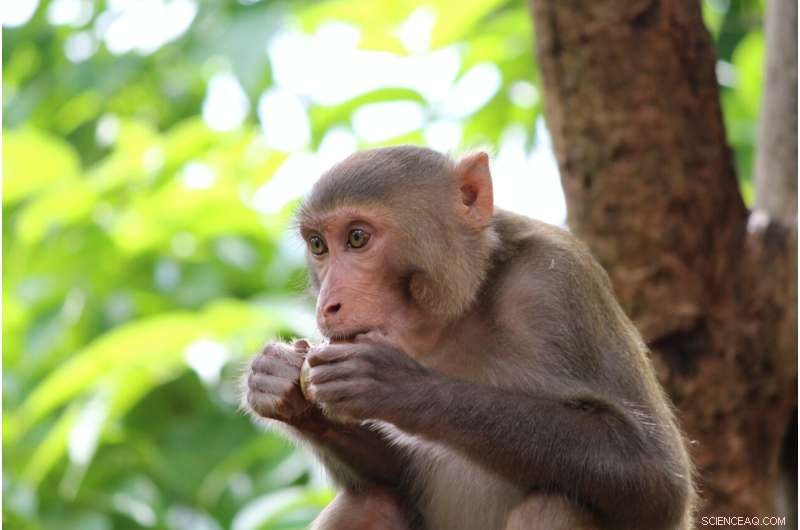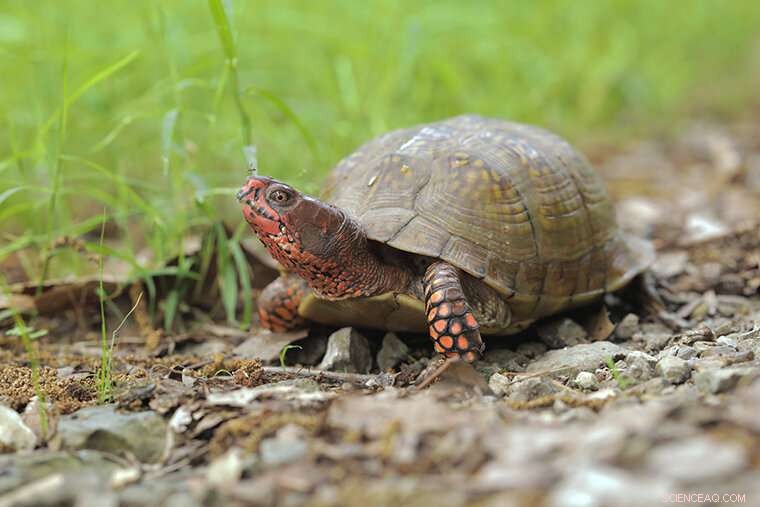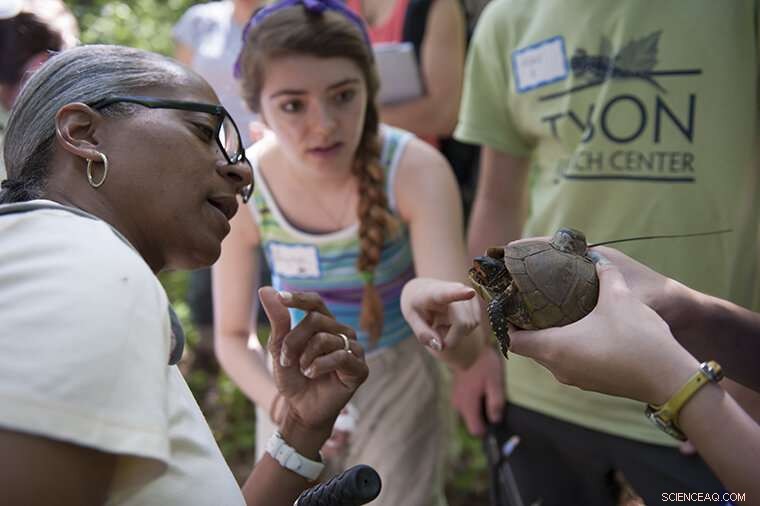
Crédit :domaine public Unsplash/CC0
Le microbiome est l'ensemble des microbes qui colonisent un habitat, corps humain ou autre. Grâce à la recherche pionnière sur le microbiome à la faculté de médecine de l'Université de Washington à St. Louis, les gens du monde entier comprennent désormais beaucoup mieux le rôle fondamental des microbes intestinaux dans la santé et la maladie humaines.
Les animaux et les plantes dépendent également de milliers de microbes différents pour les maintenir en vie. Bien que l'on en sache moins sur ces associations, une nouvelle génération de scientifiques explore les relations entre une armée cachée de microbes et les créatures qu'ils soutiennent et fortifient. Ces microbes d'écosystèmes divers (mDivE-STL) sont au centre d'un symposium de recherche organisé le 3 octobre par la Living Earth Collaborative.
Dans plusieurs instituts de recherche de Saint-Louis, les chercheurs étudient les microbiomes humains et non humains. Ce symposium a été organisé pour aider à favoriser une communauté de chercheurs étudiant divers systèmes microbiens tout en bénéficiant de la grande force locale de l'expertise en microbiome humain.
Prenez, par exemple, les chercheurs qui étudient les singes hurleurs noirs (Alouatta pigra) en Amérique du Nord et centrale. Ces grands singes charismatiques sont connus pour émettre l'un des cris les plus bruyants des forêts tropicales du Mexique, du Guatemala et du Belize.
En tant qu'herbivores arboricoles, les singes hurleurs noirs consomment principalement des feuilles d'arbres et de vigne, des fleurs et des fruits. Parce qu'ils manquent d'enzymes capables de digérer la cellulose, le glucide qui compose la paroi cellulaire des feuilles, les singes hurleurs noirs dépendent de la fermentation déclenchée par leur microbiote intestinal pour obtenir l'énergie dont ils ont besoin à partir de ces aliments.
Tout ce processus peut être beaucoup plus dynamique qu'on ne le pensait auparavant, selon des recherches menées par des scientifiques de l'Université de Washington. Des preuves commencent à apparaître que les changements microbiens intestinaux liés à l'alimentation tamponnent l'énergie et la disponibilité des nutriments pour des animaux tels que les singes hurleurs noirs.

Une tortue-boîte sauvage au Tyson Research Center, la station de recherche environnementale de l'Université de Washington. Avec le soutien de Living Earth Collaborative, les chercheurs ont élargi le projet St. Louis Box Turtle pour caractériser les microbiomes natifs des tortues-boîtes à trois doigts. Crédit :Thomas Malkowicz / Université de Washington
Elizabeth Mallott, professeure adjointe de biologie en arts et sciences, utilise la métabolomique pour examiner comment les métabolismes microbiens réagissent aux changements dans ce que mangent leurs hôtes et dans quelle quantité. Elle a récemment mené une étude auprès d'une population de singes hurleurs noirs sauvages qui connaissent chaque année trois saisons distinctes qui affectent leur régime alimentaire :une saison humide dominée par les fruits; une saison sèche dominée par les feuilles; et une saison sèche dominée par les fruits.
"Nous pouvons voir que lorsque les singes mangent plus d'un nutriment spécifique, les microbes intestinaux métabolisent davantage ce nutriment", a déclaré Mallott, premier auteur de la recherche publiée dans Molecular Ecology. . "But beyond that, what was exciting is that we could look at the interactions between the microbes and the metabolites in different seasons, including seasons where the monkeys were limited nutritionally or energetically by the food that was available in their environment."
Microbes tend to compensate during lean times, Mallott discovered, prioritizing functions that provide more nutrients to the host. But that system falls apart when food availability becomes truly limited.
"Then the microbes seem to be scrambling. They just try to steal as many nutrients from each other as possible," said Mallott, who also looks at how environmental variation impacts the gut microbiome in humans.
Microbes could benefit species conservation
Studying the microbiomes of animal populations that thrive in the wild is important because it may provide researchers with candidate microbes and microbial consortia that could be used to improve disease resistance, nutrient absorption and ultimately the fitness of threatened species or animals that reside in degraded habitats.

Visitors take a close look at “Parkey,” a turtle tagged and tracked as part of the St. Louis Box Turtle Project. With support from the Living Earth Collaborative, researchers have expanded the project to characterize the native microbiomes of three-toed box turtles. Credit:Sid Hastings / Washington University
This is true for mammals including black howler monkeys, but also reptiles such as the Missouri native box turtles—including the ones that the Saint Louis Zoo Institute for Conservation Medicine has studied at two sites in the St. Louis area since 2012, as part of the St. Louis Box Turtle Project.
With support from the Living Earth Collaborative, researchers are expanding that effort to include characterizing the microbiomes of three-toed box turtles and exploring how they vary within and between populations. Scientists from the laboratory of Fangqiong Ling, an assistant professor of energy, environmental and chemical engineering at the McKelvey School of Engineering, are collaborating on this turtle project to integrate microorganisms into the wildlife conservation toolbox.
"In general, wildlife microbiomes—the bacteria, archaea, protists and viruses that are found inside and on the body—are an understudied aspect of biodiversity conservation," said Sharon L. Deem, director of the Institute for Conservation Medicine and of the Saint Louis Zoo WildCare Institute Center for Chelonian Conservation.
Deem and Mallott are both scheduled to speak at the Oct. 3 research symposium, which was organized by Ling, Gautam Dantas, a professor of pathology and immunology at the School of Medicine, and Jonathan Losos, the William H. Danforth Distinguished University Professor of biology in Arts &Sciences and director of the Living Earth Collaborative.
About half of the microbiome research that will be presented relates to animals, plants and the environment, while the rest is more closely related to human health.
"You can't really understand the human microbiome and its interesting dynamics if you don't consider it in the context of the environment," said Dantas, who describes the microbiome research in his laboratory as being about 90% focused on humans and 10% in other habitats, including plants, soil and the built environment. "Even if you're purely focused on the microbes in humans, you're not going to be able to explain the important dynamics of those of that ecosystem if you don't understand the interactions in microbes within and on the body, and where those microbes come from."